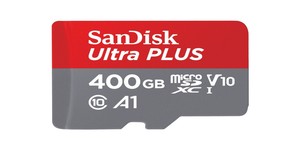HP, SanDisk partner on memristor, ReRAM technology
October 9, 2015 | 11:49
Companies: #hewlett-packard #hp #intel #micron

Hewlett Packard and SanDisk have announced a long-term partnership to develop a new technology for Storage Class Memory (SCM) combining the best of memristor and ReRAM.
The memory industry is currently working towards a homogenisation of memory types. Where today we have volatile but fast system RAM and non-volatile but slow flash memory, the systems of tomorrow may simply have a single pool of high-speed non-volatile memory which can be used as either - doing away with the laborious task of reading data from storage into RAM, modifying it, then writing it back again. Early work on this is already bearing fruit: Intel and Micron's joint partnership on universal memory technologies has created 3D Xpoint, some thousand times faster than traditional NAND flash modules.
Now, HP and SanDisk are getting in on the game. HP has been working on memristor technology for years, partnering with memory giant Hynix in 2010 and announcing a new class of computing device based around the technology, The Machine, in 2014. SanDisk, for its part, has been looking to build ReRAM products - and HP's memristor know-how could be key. As a result, the two companies are combining their efforts in order to gain an early foothold in what has become known as the Storage Class Memory (SCM) market.
'We are very excited to deepen our relationship with HP and enhance its leadership offerings by using our complete portfolio of enterprise SAS, SATA and PCIe products, and leading-edge enterprise system solutions,' boasted Siva Sivaram, executive vice president of memory technology at SanDisk, getting in the usual product plugs. 'Our partnership to collaborate on new SCM technology solutions is expected to revolutionise computing in the years ahead.'
'We are excited to be working with SanDisk as they share an understanding of the significance of this challenge, and more importantly share a vision that the solution lies within Memory-Driven Computing,' added Martin Fink, HP's chief technology officer, of the partnership. 'Together, we plan to bring new memory solutions to market and accelerate adoption in the enterprise, while simultaneously advancing HP’s development of The Machine to enable a new computing model over the long term.'
While commercial, large-capacity ReRAM products may be a few years away at present, the two companies have also agreed to work on datacentre-centric solid-state drives (SSDs) built around more traditional NAND flash modules.
The memory industry is currently working towards a homogenisation of memory types. Where today we have volatile but fast system RAM and non-volatile but slow flash memory, the systems of tomorrow may simply have a single pool of high-speed non-volatile memory which can be used as either - doing away with the laborious task of reading data from storage into RAM, modifying it, then writing it back again. Early work on this is already bearing fruit: Intel and Micron's joint partnership on universal memory technologies has created 3D Xpoint, some thousand times faster than traditional NAND flash modules.
Now, HP and SanDisk are getting in on the game. HP has been working on memristor technology for years, partnering with memory giant Hynix in 2010 and announcing a new class of computing device based around the technology, The Machine, in 2014. SanDisk, for its part, has been looking to build ReRAM products - and HP's memristor know-how could be key. As a result, the two companies are combining their efforts in order to gain an early foothold in what has become known as the Storage Class Memory (SCM) market.
'We are very excited to deepen our relationship with HP and enhance its leadership offerings by using our complete portfolio of enterprise SAS, SATA and PCIe products, and leading-edge enterprise system solutions,' boasted Siva Sivaram, executive vice president of memory technology at SanDisk, getting in the usual product plugs. 'Our partnership to collaborate on new SCM technology solutions is expected to revolutionise computing in the years ahead.'
'We are excited to be working with SanDisk as they share an understanding of the significance of this challenge, and more importantly share a vision that the solution lies within Memory-Driven Computing,' added Martin Fink, HP's chief technology officer, of the partnership. 'Together, we plan to bring new memory solutions to market and accelerate adoption in the enterprise, while simultaneously advancing HP’s development of The Machine to enable a new computing model over the long term.'
While commercial, large-capacity ReRAM products may be a few years away at present, the two companies have also agreed to work on datacentre-centric solid-state drives (SSDs) built around more traditional NAND flash modules.

MSI MPG Velox 100R Chassis Review
October 14 2021 | 15:04








Want to comment? Please log in.